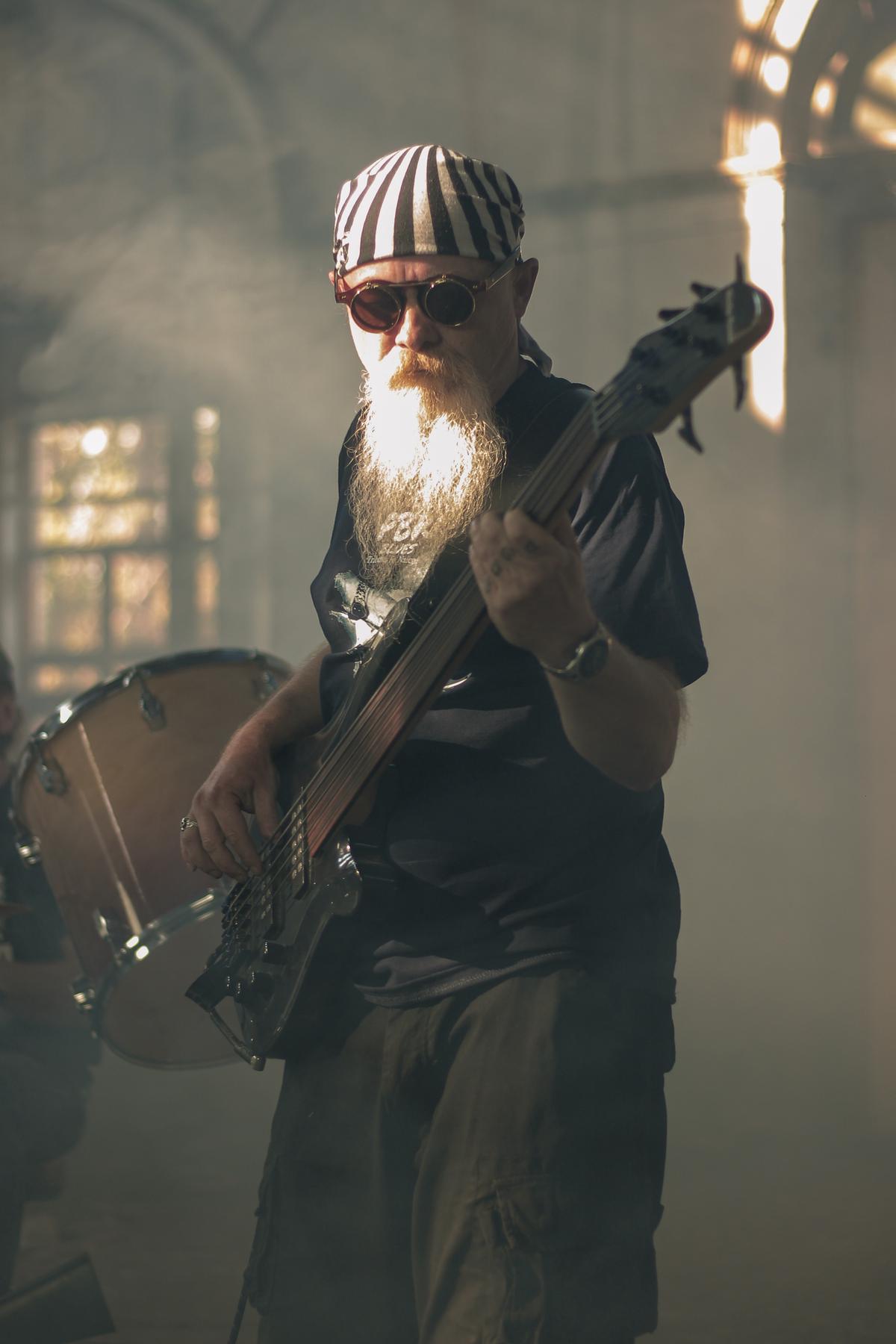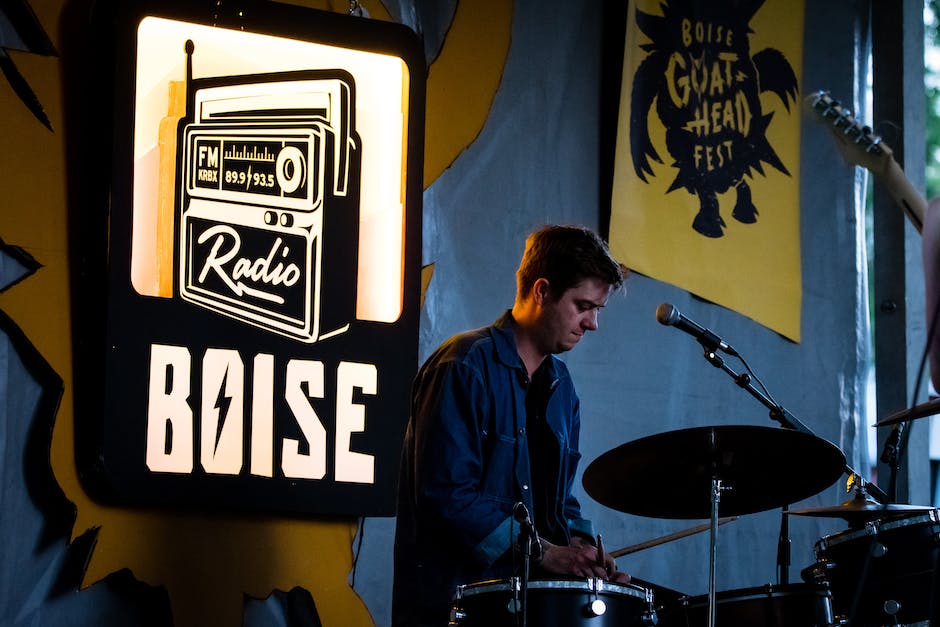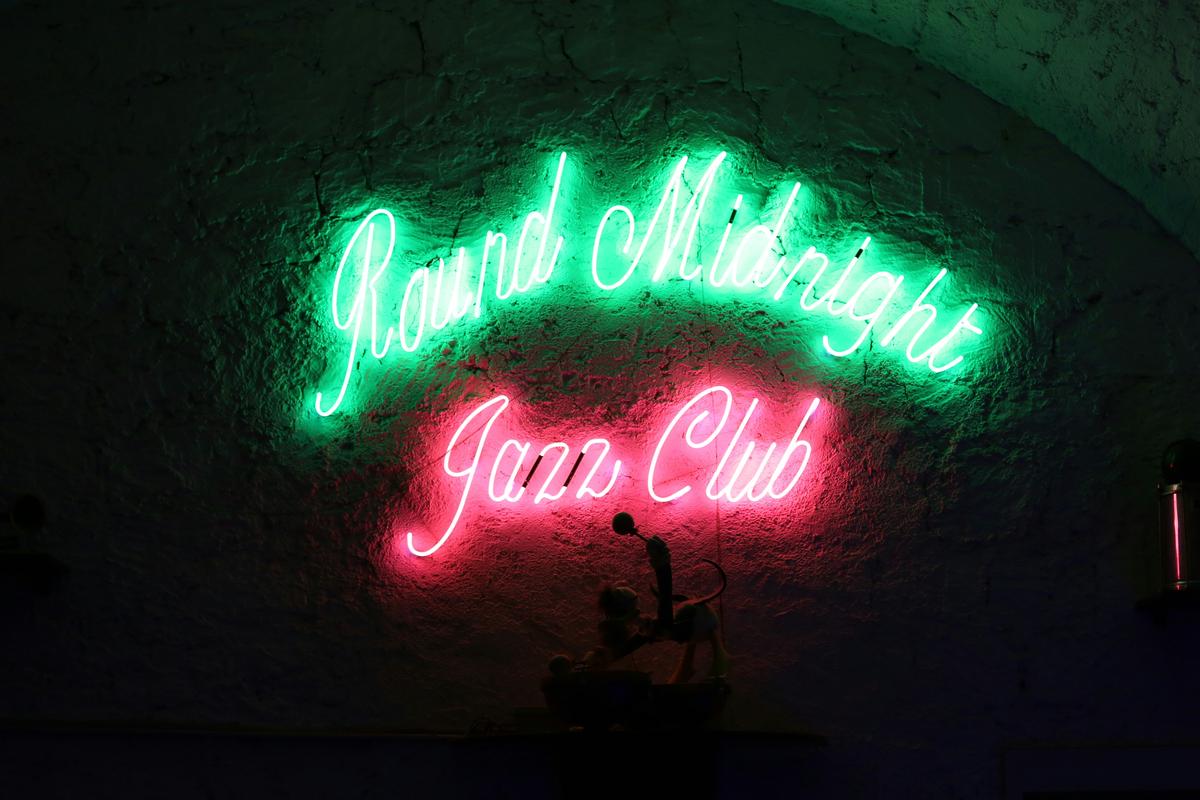Steeped in rich history and swaying with an unmistakably vibrant rhythm, Jazz music has left an indelible impression on the city of Chicago. A manifestation of cultural exchange, resilience, and transformative change, the jazz scene in the Windy City has seen influential waves spread across the boats of time. From its embryonic stage during the Great Migration, the rise of legendary clubs in the South Side, to its present state of evolution and influence, Chicago’s jazz narrative is ingrained within its urban fabric. An enthralling exploration into its illustrious past, dynamic adaptation, celebrated venues, and its crusade towards an exciting future unfolds, thereby offering an enriching perspective on where this resilient craft stands today.
Rise of Jazz in the Windy City
Immersed deep within the pulsating veins of the grand city of Chicago, there thrives an energy, a rhythm, an indomitable force of life – jazz music. Originating from the vibrant walls of the city, jazz has beaten the odds to mold a rich tapestry of sound that is as resilient as the Windy City itself.
Chicago, the vibrant hub of the Midwest, has long been home to an unabating rhythm of creative energy that fed the genesis and growth of jazz right from its formative years. The Great Migration of the early 20th century saw thousands of African Americans trek north from the South, bearing with them an enriched cultural heritage, an indefatigable spirit, and an innate sense of rhythm that would forever etch itself into the heart of Chicago.
Jazz materialized as an intricate blend of this African musical tradition with the European harmonic structure in the crescent city of New Orleans. Like a river finds its course, so too did jazz music, threading northwards up the Mississippi River, making vibrant pit stops in cities like St. Louis and eventually finding a home in the vibrant boomtown of Chicago.
The Roaring Twenties proved to be the golden era for Chicago’s Jazz culture. South Side, also known as “Bronzeville” or the “Black Metropolis”, transformed into the hotspot for jazz clubs. These thriving hubs of creativity were animated by prominent musicians of the era – the incomparable Louis Armstrong, Earl Hines, and King Oliver.
What made jazz so incredibly popular in Chicago, one might ponder? It was the city’s discerning appetite for the arts, melodies, and rhythms that provided fertile soil for the jazz scene’s evolution. The city’s socio-cultural milieu, marked by waves of immigrants arriving with their intrinsic musical sensibilities, created an irresistibly eclectic atmosphere that propelled the whirlwind of jazz.
Nothing echoed the city’s resilience and relentless spirit more than jazz, which traversed socio-economic barriers and created common ground across the disparate sections of society.
The potency of Chicago’s jazz, its ceaseless improvisations, and the audacious encounters of differing melodies and rhythms, have solidified its influence on the international music scene. Even amidst the Great Depression, the flame of jazz music continued to burn brightly, serving a source of solace and hope against the backdrop of despair.
Upon the arrival of the Second World War, bebop fell into the lap of the city, blending perfectly with the established jazz scene. Chicago established itself as a haven for pursuing creative resilience and audacity, nurturing innovative music talents such as Charlie Parker and Dizzy Gillespie.
Jazz remains more than just music in Chicago; it is an integral part of the city’s thriving culture and history, a lifeblood that flows vibrantly through its lively streets and bustling neighborhoods. From it’s inception, to the bustling clubs of the Roaring Twenties, battling through the adversity of the Great Depression, and on into modernity, the heart of Chicago has always pulsed to the rhythm of jazz.
Today, the embers of jazz continue to glow in Chicago, enriched by its pioneering past and ever-evolving vibrant present. Whether it’s a collaborative jam session echoing through the streets of Logan Square, a simmering blues melody in a South Side dive bar, or the illustrious melodies of the Chicago Jazz Festival, one thing is certain – jazz music is eternally ingrained in the DNA of Chicago, capturing its resilience, diversity, and relentless spirit, in the sweetest harmonies and boldest riffs.

Influence and Evolution of Jazz in Chicago
The Windy City’s dance with jazz didn’t end as the wartime bebop beats waned. Chicago has always been an interactive city, one that celebrates its identity while welcoming global influences. In the kaleidoscopic world of post-WWII music, Chicago’s jazz scene didn’t stagnate but continued to evolve, intertwining with the blossoming trends around the globe.
The advent of the 1950s saw the city’s jazz scene creatively mutate into “cool jazz,” a style characterized by relaxed tempos and lighter tone. The seminal figure of this new movement, Miles Davis, famously recorded his album “Birth of the Cool” during this period. The recording embodied the refracted, moodier aspects of bebop and set the stage for further innovation and development. The harmonic complexity of cool jazz reverberated beyond the city, inspiring artists around the world.
Fascinatingly, the evolution of jazz in Chicago didn’t always follow in the footsteps of the rest of the country. During the 1960s, when the nation was enraptured by free jazz, an avant-garde subgenre symbolizing unfettered, explosive musical creativity, the Windy City wove its own intimate jazz tale. Its tale was told through the bittersweet strains of hard bop, an amalgam of rhythm and blues, and gospel music enmeshed with more traditional jazz roots. Even as Chicago fed off and contributed to the global jazz landscape, it ensured its offerings were distinctly its own.
Few cities have echoed the potent influence of Chicago on the international jazz scene. A shining testament to this was the advent of the Association for the Advancement of Creative Musicians (AACM) in the mid-1960s. This organization, a collective of forward-thinking musicians, wedded the ideals of artistic autonomy with communal cooperation. The AACM’s influence stretched far beyond American borders; it reshaped and introduced fresh sonic possibilities to the global jazz sphere.
In embracing the evolving mosaic of jazz through the years, Chicago has birthed a unique music breed, gorged on the traditions of blues, shaped by the spirit of improvisation and driven by bold experimentation. Its vibrant nightlife and the iconic Jazz Showcase Club continue to be nurturing grounds for artists, further solidifying Chicago’s status as a legendary jazz metropolis.
From the resonant echo of a solitary saxophonist practicing in a dimly lit apartment to the surging crescendo of a full ensemble pouring their heart out on adorned stages, jazz remains the pulsing, dynamic heartbeat of Chicago. Its journey to today’s contemporary jazz scene has been an adventurous symphony, taking cues from and giving back to the global soundscape, all while keeping its robust, individualistic character intact.
The tale of jazz in Chicago is a testament to music as a boundless language. One that holds the power to shape, inspire, and unite. Predominantly, Chicago bravely stands as a symbol of how the power of music can propel a city to become a global influencer, contributing ceaselessly to the evolution of a genre that knows no bounds. Its jazz journey, rich in trials, transformations, and triumphs, resounds in its streets and beyond, shaping and resonating with the music that moves the world.

Jazz Venues and Festivals in Chicago
In the aftermath of World War II, the evolution of Chicago’s jazz scene took a significant turn, characterized by a transcendent outpouring of creativity that began shaping the global jazz sound. It’s in this era that a new trend of music identified as cool jazz emerged, adding a sophisticated and tranquil lilt to the city’s jazz narrative. The origins of this style can be traced back to the Windy City, instilling a globally acknowledged ‘cool’ factor within the jazz culture.
Just like the city’s skyline evolving organically against the Lake Michigan backdrop, the jazz scene in Chicago was never static; it was a dynamic, ever-expanding expression of cultural passion. As the birthplace of cool jazz, Chicago’s musical offerings began to be recognized as a connoisseur’s delight, influencing the global jazz scene with its subtle complexities and nuanced renditions.
The city’s canvas for jazz further expanded during the free jazz era, anchored by the Association for the Advancement of Creative Musicians (AACM). The AACM, since its inception in 1965, has championed a vibrant and innovative jazz/music scene, making a profound impact not just in Chicago but across the global jazz sphere. The association, consistently driven by a spirit of exploration, ventured into uncharted territories of music, ensuring that Chicago’s jazz tale was marked by an incessant vitality and ingenuity.
While nightfall cloaks the city in darkness, the streets of Chicago illuminate with the mesmerizing notes of jazz. The city’s nightlife is studded with institutions like the Jazz Showcase Club, a jewel in Chicago’s music crown. The legend of this club goes back to 1947, home to some of the most innovative performances by jazz maestros. It stands as a testament to Chicago’s enduring love for this remarkable art form, its walls echoing with the resonance of saxophones, trumpets, and double bass.
While the buildings of the Chicago skyline add grandeur to the city’s silhouette, the jazz legacy that has unfolded over the decades contributes an immeasurable depth to its cultural persona. Jazz, in Chicago, is more than a genre—it is the city’s heartbeat, a defining feature of its lifeblood.
Shaping, inspiring, and uniting—the power of music, particularly jazz, stretches beyond the realms of entertainment, transforming into a tool for cultural connection. It is a boundless language, defying limitations of geography, transcending barriers and resonating with every melody lover across the globe.
Uniquely placed at this intersection of culturally diverse influences and undying enthusiasm for music, Chicago has played a fundamental role in evolving the genre of jazz. Its history is a testament to the potential of human creativity and resilience, embodied in the spirit of the city’s jazz heritage, a tune that Chicago continues to play on the global music stage, unabated. The city’s journey is a chronicle of embracing change while staying rooted in tradition, a score on the symphonic opus of jazz. And as the music flows across clubs, festivals, and streets—in Chicago, the beat goes on.

The Modern State of Jazz in Chicago
Today, Chicago’s jazz scene stands tall, albeit with vibrant patches of evolution still coloring its complexion. It’s an interactive city, steadfast in its endeavors, steeped in a rich tradition that gracefully embraces change. Notwithstanding a vibrant past, the post-World War II period bore witness to a laudable transformation of Chicago’s jazz landscape. The city found its new jazz rhythm in the loosened, expressive and innovative lines of cool jazz.
Cool jazz, characterized by its relaxed and calm melodies, was a soothing balm against the backdrop of a war-tumultuous world, radiating an influence that echoed across the global stage. Chicago’s embodiment of this laid-back style was seen as a monumental shift in the jazz spectrum, shaking the genre to its very roots. It was during this time that Chicago’s jazz scene truly began to vibrate on a global frequency and has continued to do so ever since.
Interconnected and intrinsic is the Association for the Advancement of Creative Musicians (AACM), a beacon for creative freedom in the world of jazz. The AACM was not just a group, but a movement, transforming Chicago’s jazz scene by injecting a sense of liberty and encouraging innovative performances. Its impact resonates within the jazz sphere today, not just within the confines of Chicago, but also internationally, speaking volumes of the cultural magnitude Chicago holds in its hands.
A city that thrives when the sun goes down, the pulsating nightlife is a testament to the endurance of jazz in Chicago. The city boasts a robust roster of nightclubs and hubs, acting as lifelines for jazz beats, with institutions like the Jazz Showcase Club rolling out the red carpet for enthusiasts to give in to the music and lose themselves in those transformative notes.
Much like Chicago’s architectural marvels, jazz music is a cornerstone of the Elysium that is Chicago’s culture. Jazz is a boundless language spoken in the city, shaping its identity and influencing the lives of its inhabitants. Its cultural connotation is profound, speaking to the resilient spirit of the people who have held onto it through various socio-economic transformations.
On the global map, there’s no denying that Chicago has been instrumental in the evolution of jazz. It has cradled the genre in its true essence while simultaneously nurturing its evolution, keeping alignment with the changing times and tastes. The city’s day-to-day musical narrative is painted by its resilience and creativity, underpinned by jazz’s continuing presence and ongoing growth.
Today, jazz in Chicago is more than a melody. It is an art form that shapes, inspires, and unites, echoing richly in every corner of the Windy City. As one marvels at the amplitude of Chicago’s jazz heritage, one cannot help but anticipate a tomorrow interspersed with more distinct jazz notes that are uniquely Chicago, ensuring the city retains its mark on the jazz landscape.
In conclusion, the present state of Chicago’s jazz scene is as alive and dynamic as ever, and with unwavering support poured into this beloved genre, its future carries a promise of continued vibrancy and innovation. The lines between past, present, and future blur as Chicago continues to resonate with the undying strains of jazz, steadfastly throbbing to the rhythm of this ever-evolving genre. As a historic city with a passionate love for music, Chicago stands at the helm of the jazz world, poised to guide it towards a future of endless expression and inspiration.

Chicago’s jazz music, woven into the city’s identity as intricately as the notes in a Duke Ellington composition, continues to echo its vibrant past while adventuring into the realms of the future. With promising new talent, innovative musical shifts, and a resilience to preserve its iconic venues, the Windy City reaffirms its dedication towards this transcendent art form. As the city continues to reshape and redefine its jazz narrative amidst new challenges and opportunities of the digital age, one thing remains certain – The pulse of jazz, the heartbeat of Chicago, will perpetually carry the city’s musical tune, resonating on the worldwide stage and entrancing with an unflinching dedication to its unique sonic expression.

Comments.
Currently there are no comments related to this article. You have a special honor to be the first commenter. Thanks!